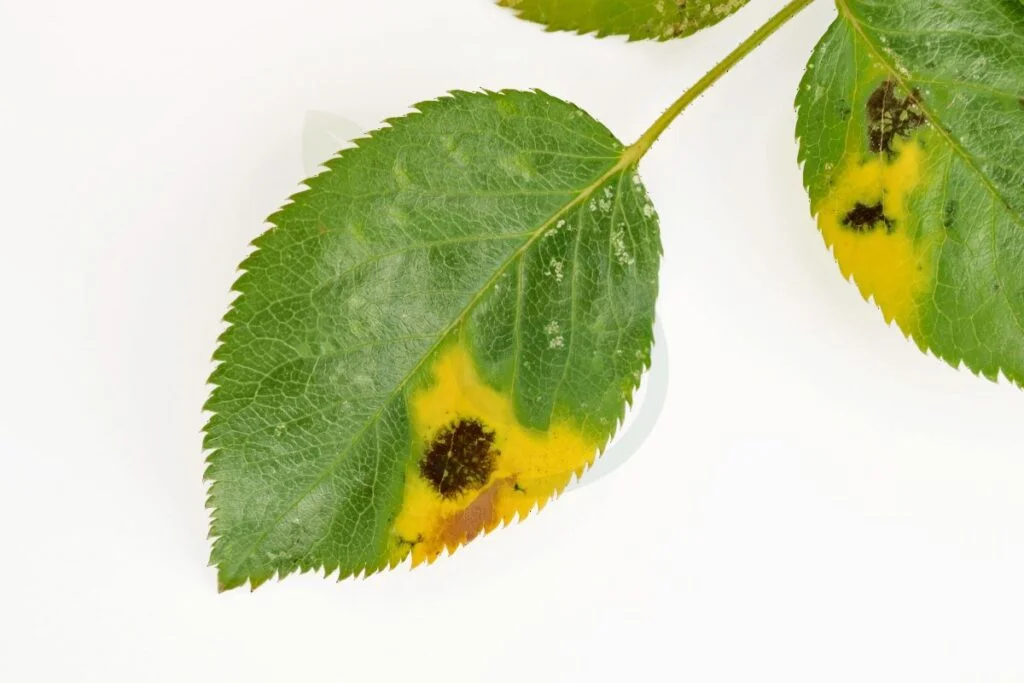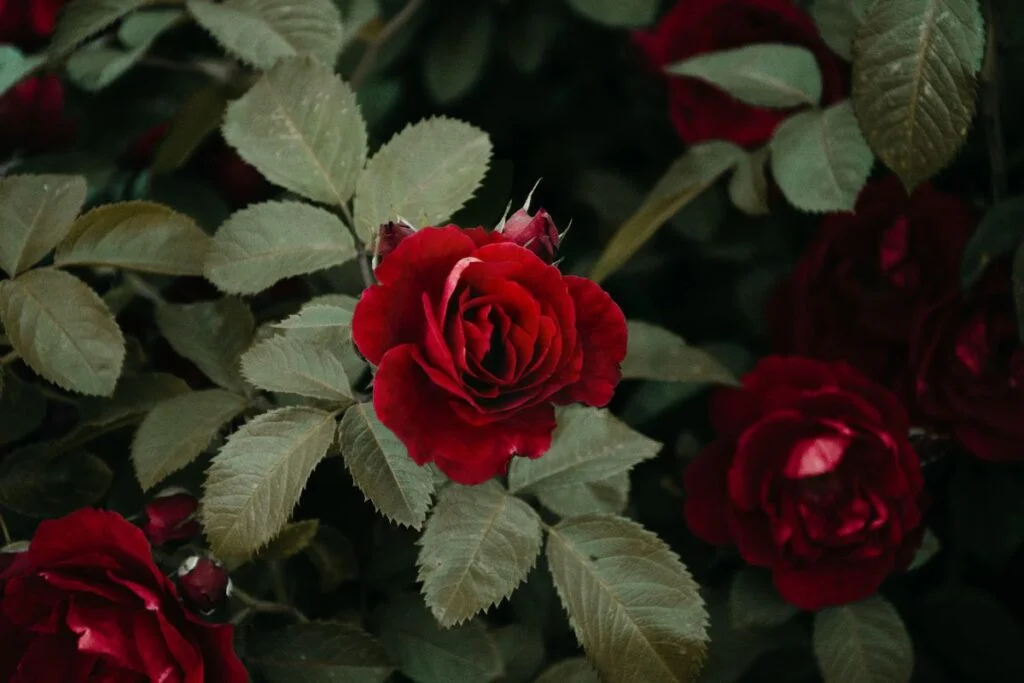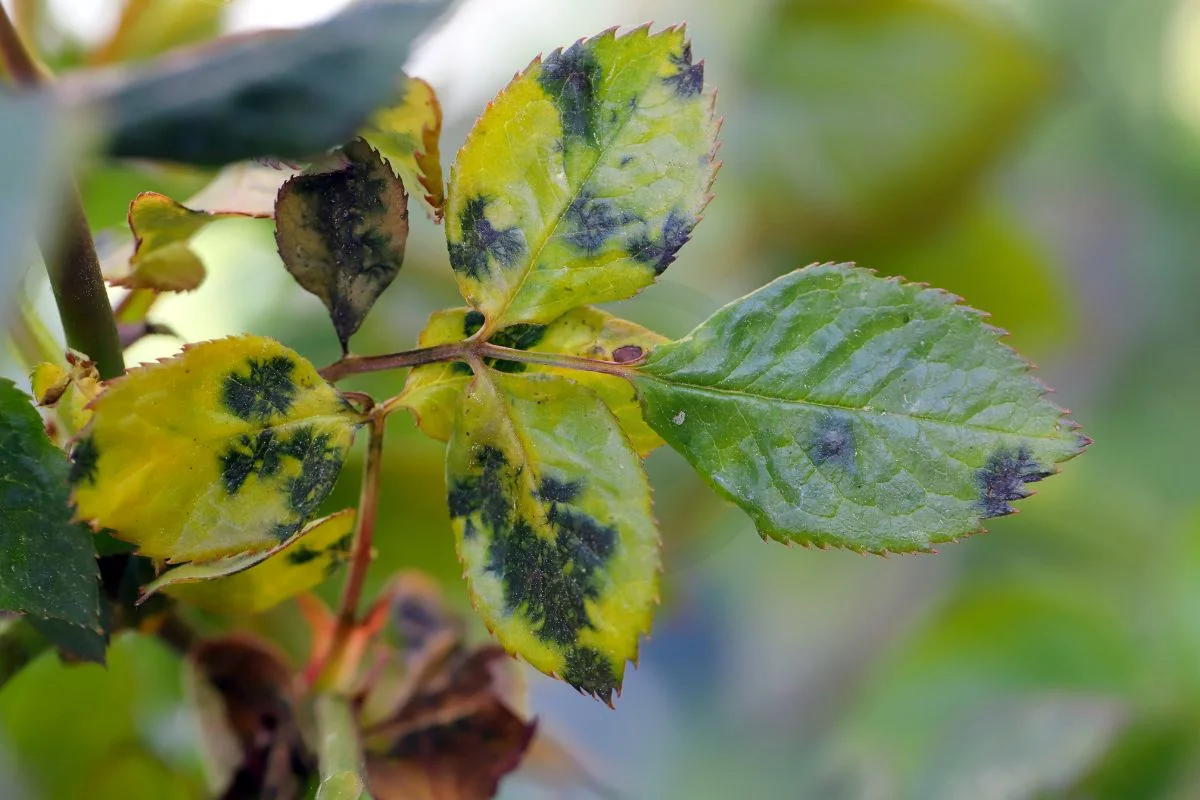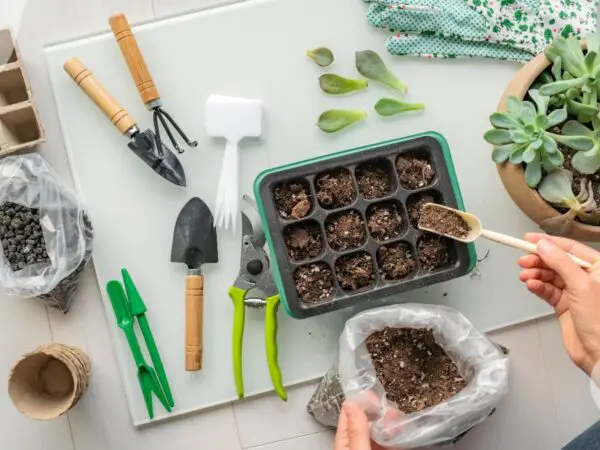Are your roses plagued by yellow leaves, black spots, powdery mildew, and pests? Don't fret, as we're here to help you reclaim your garden's splendor in spring by removing fallen and diseased leaves from the foliage. Discover practical solutions to combat this common rose woe and restore vibrancy to your floral haven.
Wondering how to banish those pesky yellow leaves and black spots from your roses for good? We've got you covered with expert tips and tricks that will have your garden blooming with health and beauty in no time. Stay tuned for a comprehensive guide on nurturing your roses back to their full glory.
Key Takeaways
- Identify Black Spot Symptoms: Learn to recognize the signs of black spot disease on your rose plants, such as yellow leaves with black spots, to take timely action.
- Utilize Non-Chemical Control Methods: Implement natural remedies like neem oil or baking soda sprays to combat black spot without harsh chemicals.
- Employ Chemical Control Strategies: Consider using fungicides as a last resort for severe black spot infestations, following label instructions carefully.
- Prevent Black Spot: Maintain good air circulation, avoid overhead watering, promptly remove infected leaves, and spores to prevent the spread of black spot.
- Adopt Growing Practices for Prevention: Ensure proper spacing between plants, provide adequate sunlight, and practice good garden hygiene to reduce black spot risks.
- Choose Resistant Rose Varieties: Select rose varieties known for their resistance to black spot to minimize the disease's impact on your garden.
Identifying Black Spot Symptoms
Yellow Leaves
Yellowing leaves are an early indication of black spot disease on roses. Identify them promptly to prevent further spread. Monitor closely for any changes in leaf color, which can signal the presence of the disease. Act promptly when yellow leaves are spotted to mitigate its impact.
Black Spots
Watch out for rapidly enlarging purplish or black patches on rose leaves, a common symptom of black spot disease. Look for diffuse and radiating strands of the fungus on leaves, indicating an advanced stage of infection. Check for small, black, scabby lesions on young stems as they can harbor the disease and spread it further.
Rose Health Impact
Understanding how black spots can reduce plant vigor is crucial for maintaining healthy roses. Be aware of the potential decline in rose popularity due to this disease, as it affects the overall aesthetics of the plant. Take necessary steps to prevent severe impacts on rose health by implementing proper care and treatment protocols.
Non-Chemical Control Methods
Good Air Flow
Proper air circulation is crucial for preventing fungal diseases on rose plants. Trim surrounding vegetation to promote airflow. Stagnant air increases the risk of black spot development.
Proper Watering
Water roses at the base to avoid wetting the foliage, reducing the chance of disease spread. Morning watering allows leaves to dry, minimizing moisture accumulation. Overhead watering should be avoided to prevent excessive moisture on leaves.
Pruning Techniques
Use sharp and clean tools when pruning roses to prevent the spread of diseases. Remove any affected stems and leaves during pruning sessions. Spring pruning, before new growth emerges, helps maintain plant health.
Mulching Benefits
Mulching offers various benefits for rose plants, including regulating soil temperature and moisture levels. Organic mulch improves soil structure over time. Mulch acts as a weed suppressor around roses.
Chemical Control Strategies
Topical Sprays
When dealing with yellow leaves black spots on roses, utilizing fungicidal sprays is crucial for effective control. Follow instructions meticulously to ensure proper application and maximum efficacy. Preventative application of sprays is key to safeguarding rose plants from black spot.
Home Remedies
For a more natural approach to combating black spot, consider using remedies like neem oil, known for its disease control properties. Homemade solutions such as baking soda sprays can also be experimented with. Researching eco-friendly options provides a sustainable way to manage the issue.
Preventing Black Spot
Ideal Conditions
Creating optimal growing conditions is essential for healthy roses. Provide adequate sunlight and ensure the plants are in well-draining soil. Maintaining a balanced environment helps prevent diseases from affecting your roses.
Light Importance
Understanding the significance of sunlight for rose growth is crucial. Ensure that your roses receive sufficient light to carry out photosynthesis effectively. Positioning your roses in areas with adequate sunlight exposure is key to their health.
Watering Techniques
Mastering the art of proper watering is vital for rose plants. Adjust the watering frequency based on weather conditions, ensuring they receive enough moisture without being overwatered. Water deeply but infrequently to encourage deep root growth.
Growing Practices for Prevention

Ensuring Air Flow
To prevent yellow leaves and black spots on roses, focus on promoting air circulation. This helps reduce humidity levels that contribute to fungal diseases. Trim nearby plants to allow better air flow around the rose bushes. Consider installing fans in enclosed spaces to enhance ventilation and minimize moisture buildup.
Pruning for Health
Pruning plays a crucial role in maintaining the health and vigor of roses. Regular pruning helps remove dead or diseased branches, preventing the spread of infections. It also shapes the bushes, encouraging new growth and abundant flowering. Proper pruning techniques ensure optimal air circulation within the plant, reducing the risk of fungal diseases.
Benefits of Mulching
Mulching offers numerous benefits for rose beds, aiding in preventing black spot and ensuring overall plant health. Mulch acts as a protective layer that conserves soil moisture, reducing the need for frequent watering. Furthermore, it suppresses weed growth, keeping the area around roses clean and free from competition for nutrients. The insulation provided by mulch also protects rose roots from extreme temperature fluctuations, promoting healthy growth.
Impact of Black Spot
Appearance Effects
Black spots on roses diminish their visual appeal, creating an unsightly appearance in gardens. These spots, caused by fungal diseases, detract from the overall beauty of rose plants. To maintain the aesthetic charm of roses, it is crucial to address and treat black spots promptly.
Incorporating preventative measures can help preserve the beauty of rose plants by combating fungal diseases effectively. By understanding how black spots affect the visual allure of roses, gardeners can take necessary steps to enhance the overall appearance of their gardens.
Health Consequences
Black spot not only impacts the appearance but also poses significant health risks to rose plants. The development of fungal diseases weakens the plant's immune system over time, making them more susceptible to other infections. Gardeners must be vigilant in recognizing the signs of black spot and implementing appropriate measures to protect the health of their roses.
Resistant Rose Varieties
Most Resistant Types
When it comes to roses with high resistance to black spot, consider planting disease-resistant varieties like Knock Out and Carefree Wonder. These cultivars are known for their ability to withstand common fungal diseases, including black spot. Research the best rose types suited for your local climate to ensure optimal growth and health in your garden.
Planting roses that are naturally resistant to black spot can significantly reduce the need for chemical treatments. By choosing disease-resistant varieties, you can enjoy beautiful blooms without worrying about unsightly black spots on the leaves. These resilient roses require less maintenance, making them ideal for both experienced gardeners and beginners.
Roses such as Sunny Knock Out and Bonica are also excellent choices for those looking to minimize the impact of black spot in their gardens. These varieties not only offer resistance to common diseases but also provide vibrant colors and lovely fragrances. Their robust nature makes them a popular choice among gardeners seeking low-maintenance yet stunning plants.
- Disease-resistant rose varieties like Knock Out and Carefree Wonder
- Minimal need for chemical treatments
- Ideal for experienced gardeners and beginners alike
Importance of Proper Care

Light Necessity
Roses require ample sunlight for healthy growth. Adequate light exposure is crucial to prevent issues like yellowing leaves. Monitor and ensure roses receive optimal sunlight for their well-being.
Watering Importance
Proper watering plays a critical role in rose care. Balanced watering practices are essential to maintain the plant's health and prevent diseases. Emphasize the significance of watering correctly for thriving roses.
Advanced Treatment Options
Chemical Solutions
Chemical solutions, such as fungicides, are effective in controlling diseases like black spots on roses. Follow safety guidelines strictly to protect yourself and the environment from harmful chemicals. Consulting with experts ensures proper application of chemical treatments.
- Use fungicides for disease control
- Adhere to safety guidelines
- Seek advice from experts before application
Non-Chemical Approaches
Opt for eco-friendly alternatives instead of chemical treatments for managing black spots on roses. Implement cultural practices like proper pruning and watering to naturally control black spot disease. Research biological controls for sustainable management without harming the environment.
- Eco-friendly alternatives
- Cultural practices for natural control
- Biological controls for sustainable management
Closing Thoughts
As you've learned about identifying, controlling, and preventing black spot on your roses, it's clear that early detection and a combination of strategies are key. By implementing non-chemical methods alongside targeted chemical treatments when necessary, you can effectively manage this common issue. Remember to choose resistant rose varieties and maintain proper care practices to minimize the impact of black spot in your garden.
Take action now by applying the knowledge you've gained to safeguard your roses from black spot and ensure they thrive. Share these tips with fellow gardeners to help them combat this fungal disease too. With proactive measures and consistent care, you can enjoy healthy, vibrant roses that bloom beautifully season after season.
Frequently Asked Questions
What are the common symptoms of black spot on rose leaves?
Black spots with yellowing leaves are typical symptoms of black spot disease. The spots start small and grow, eventually causing leaf drop if not treated promptly.
How can I prevent black spots on my rose plants without using chemicals?
Regularly prune your roses to improve air circulation, water at the base in the morning, avoid overhead watering, and remove fallen leaves promptly to reduce moisture and fungal growth.
Which chemical control strategies are effective against black spot on roses?
Fungicides containing active ingredients like chlorothalonil or tebuconazole can be used for chemical control of black spot. Follow label instructions carefully for application frequency and dosage.
What are some resistant rose varieties that are less susceptible to black spot?
Consider planting disease-resistant rose varieties such as 'Knock Out,' 'Carefree Wonder,' or 'Bonica.' These cultivars exhibit higher resistance to black spot compared to other rose types.
How do growing practices help in preventing black spot on roses?
Proper spacing between plants, adequate sunlight exposure, regular fertilization, and mulching can promote plant health and reduce the risk of black spot development in your rose garden.
Image Source: Paid image from CANVA



